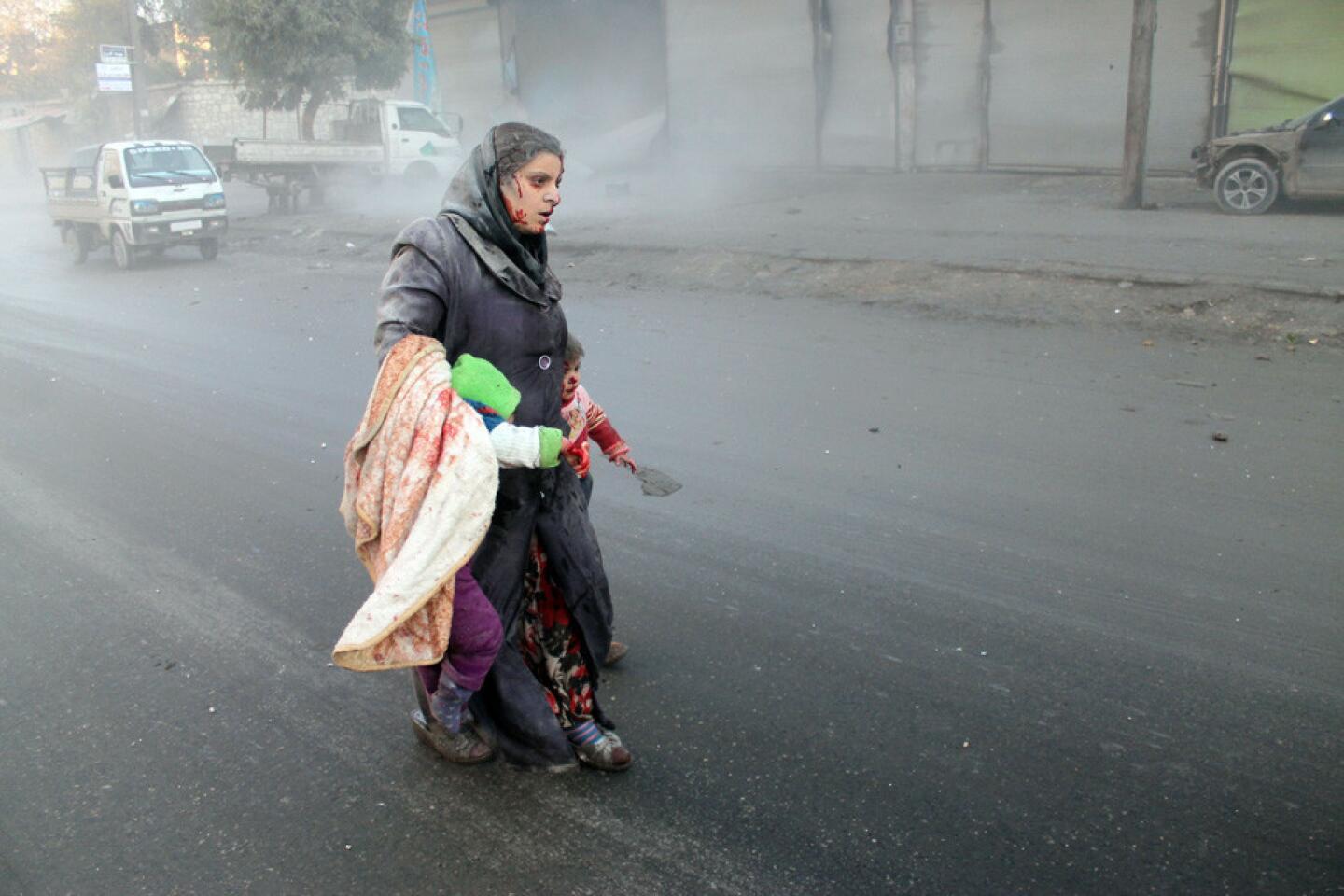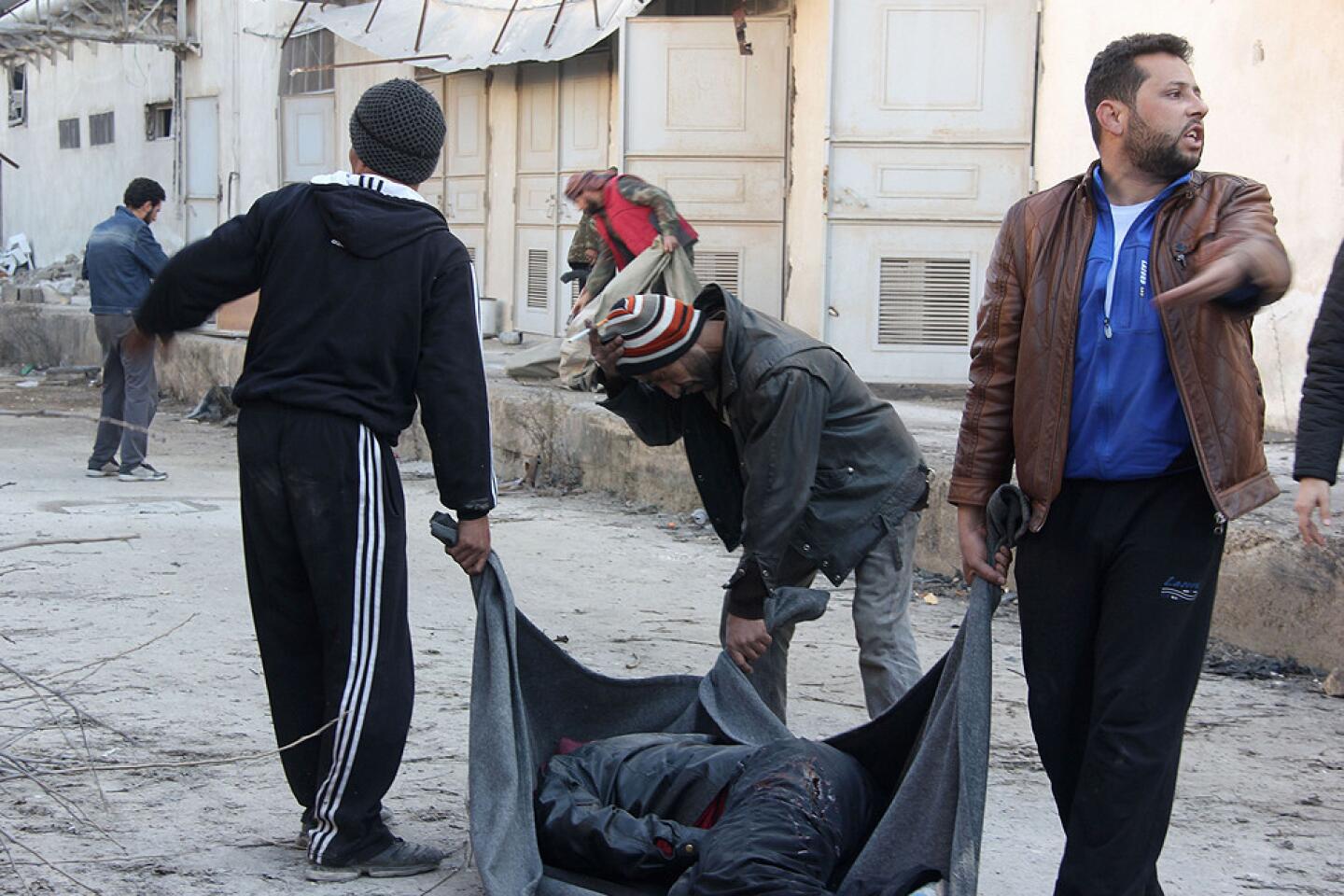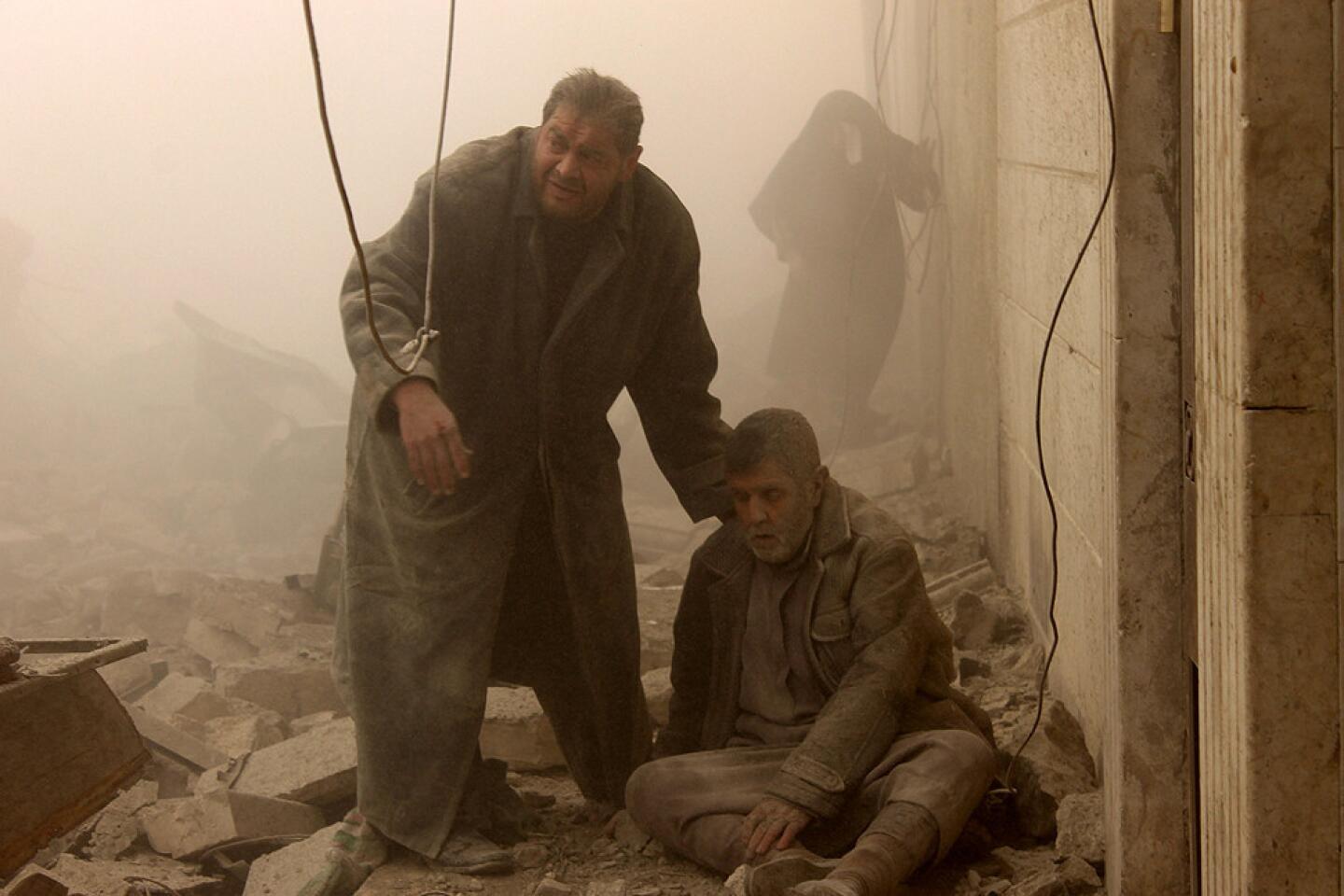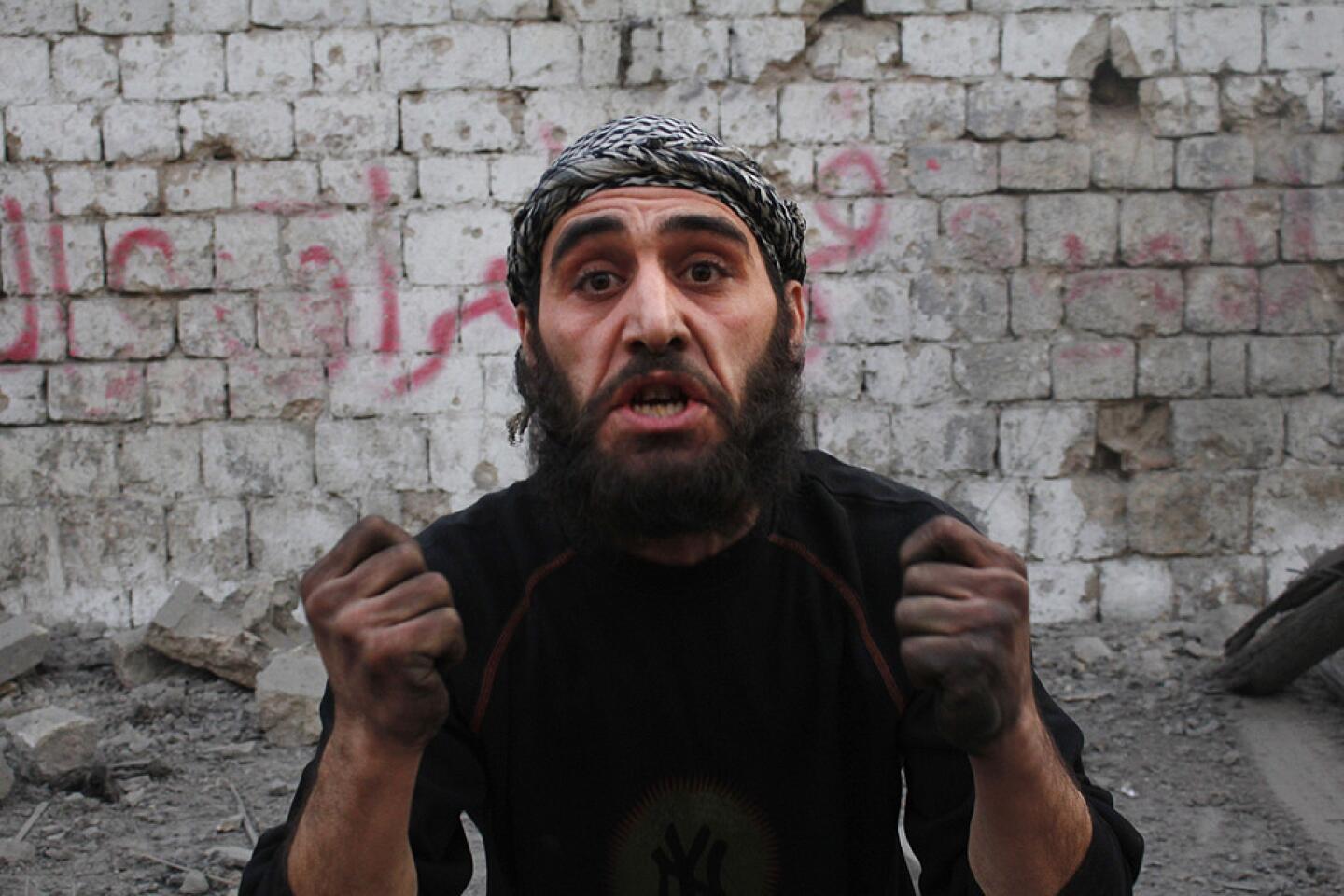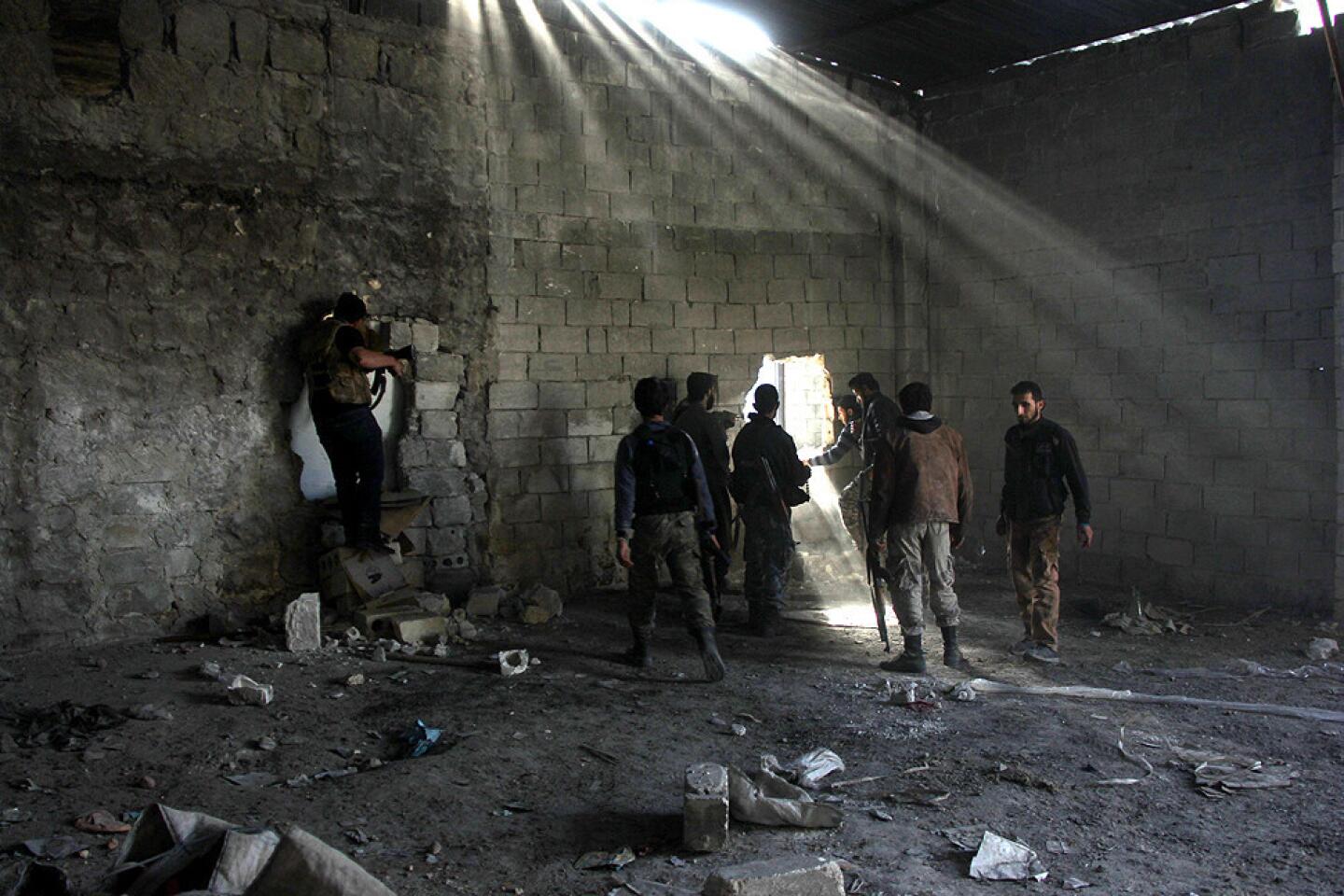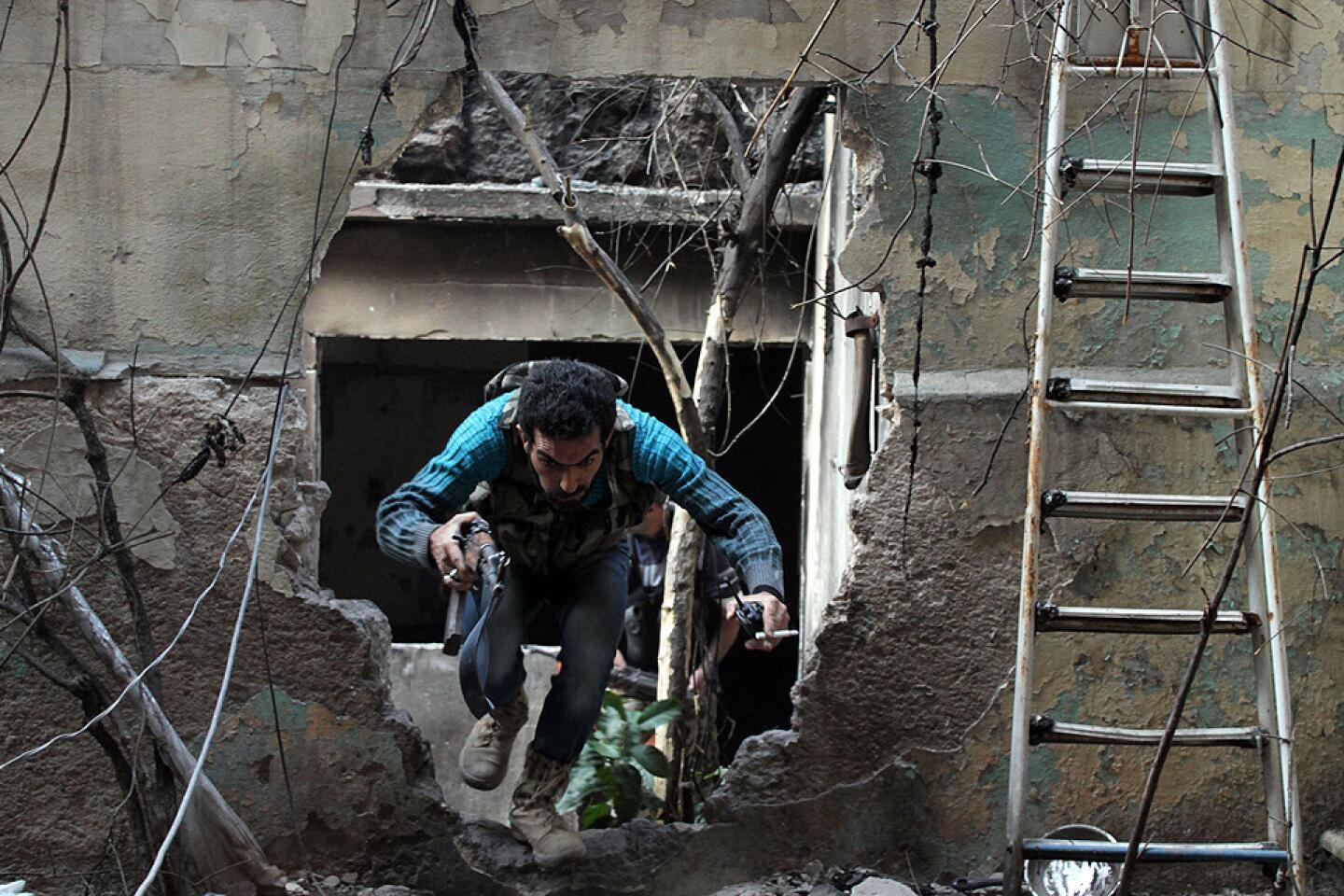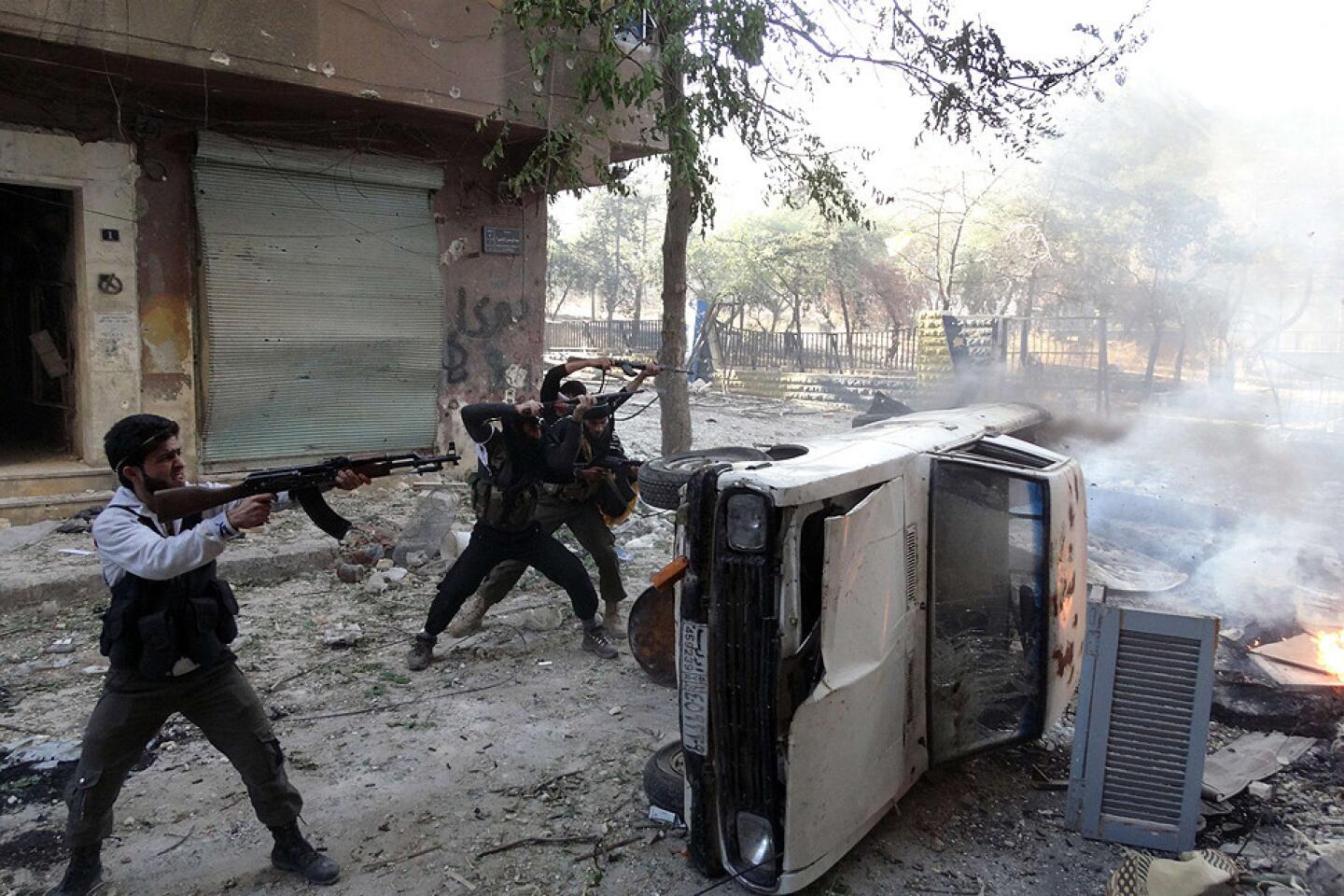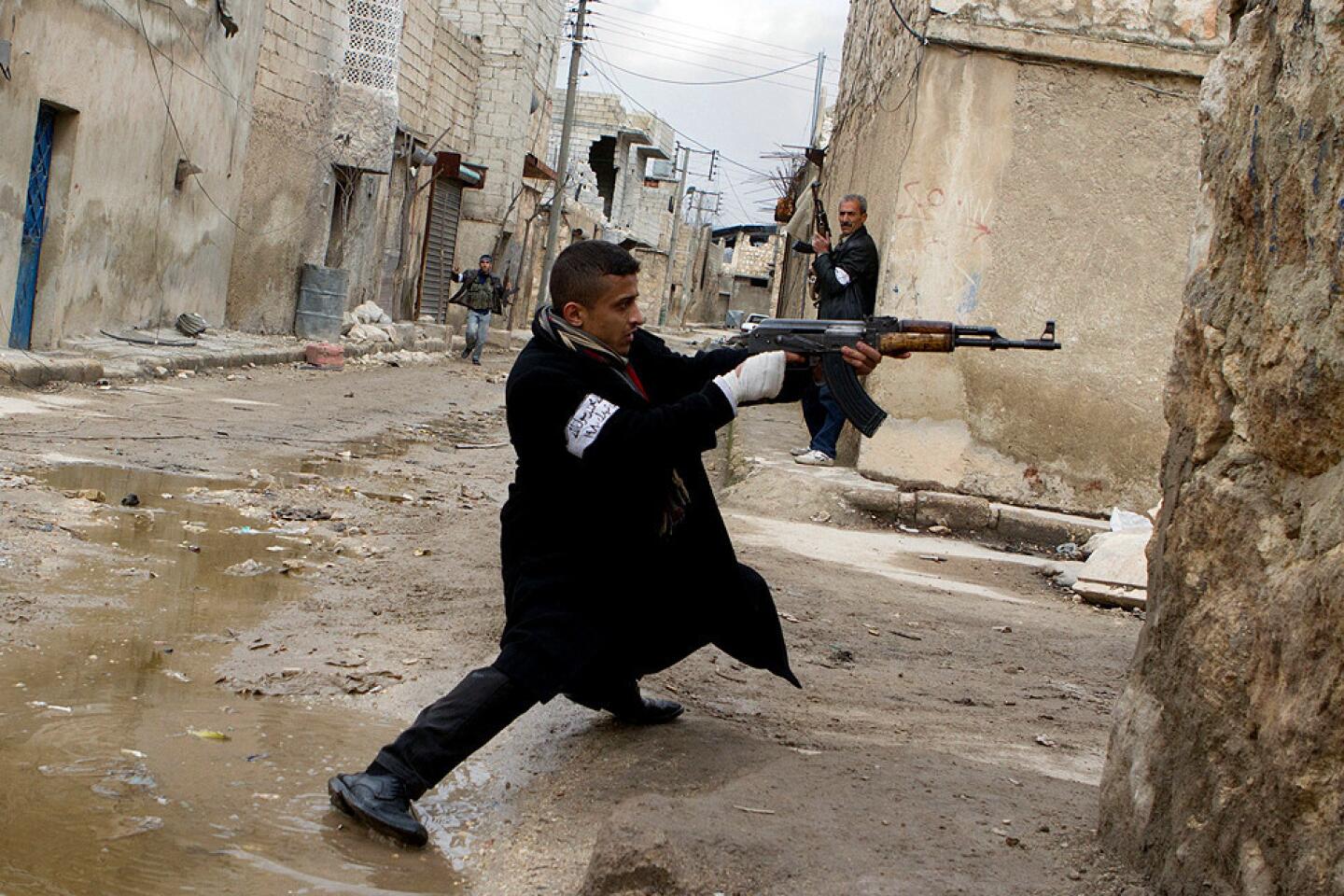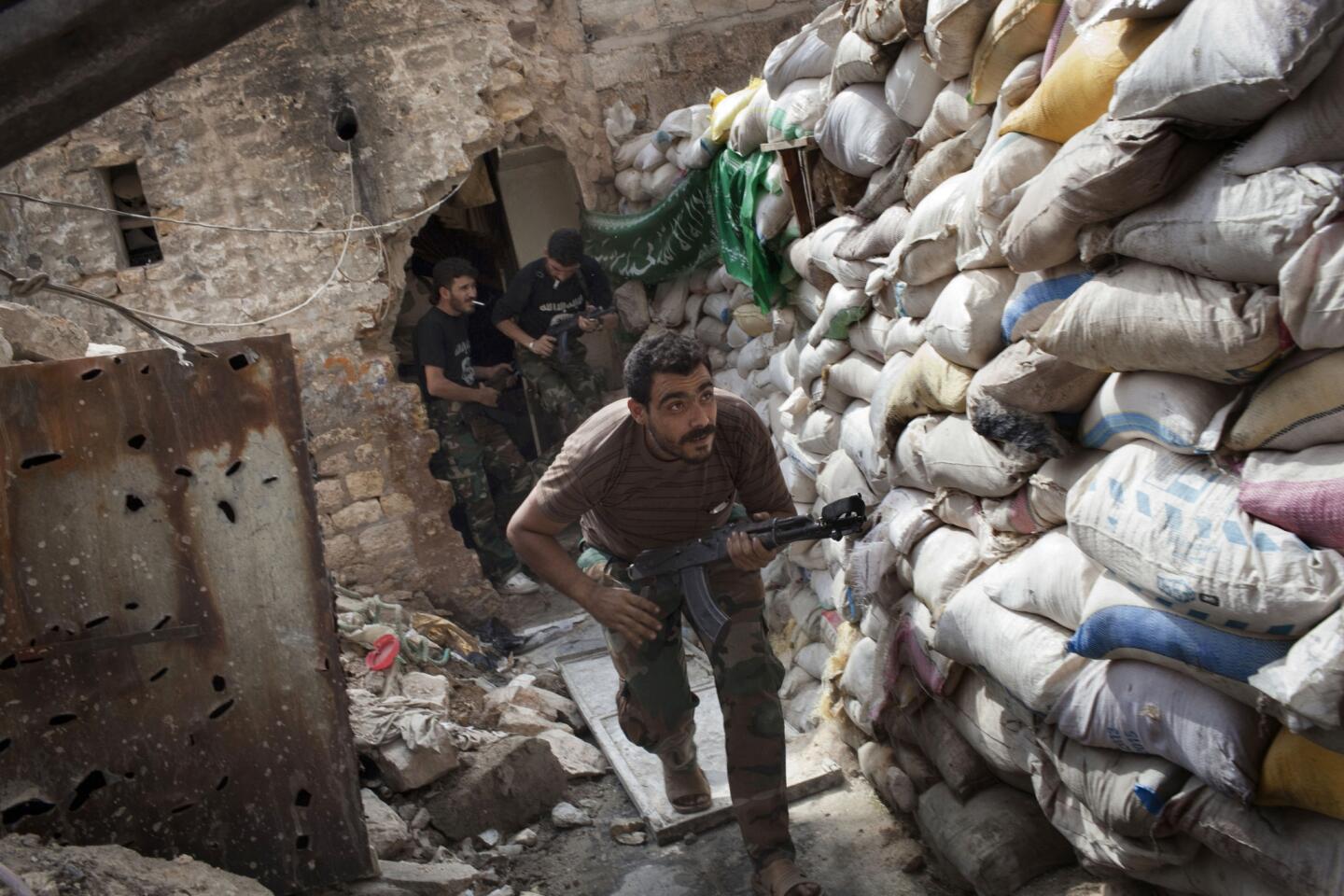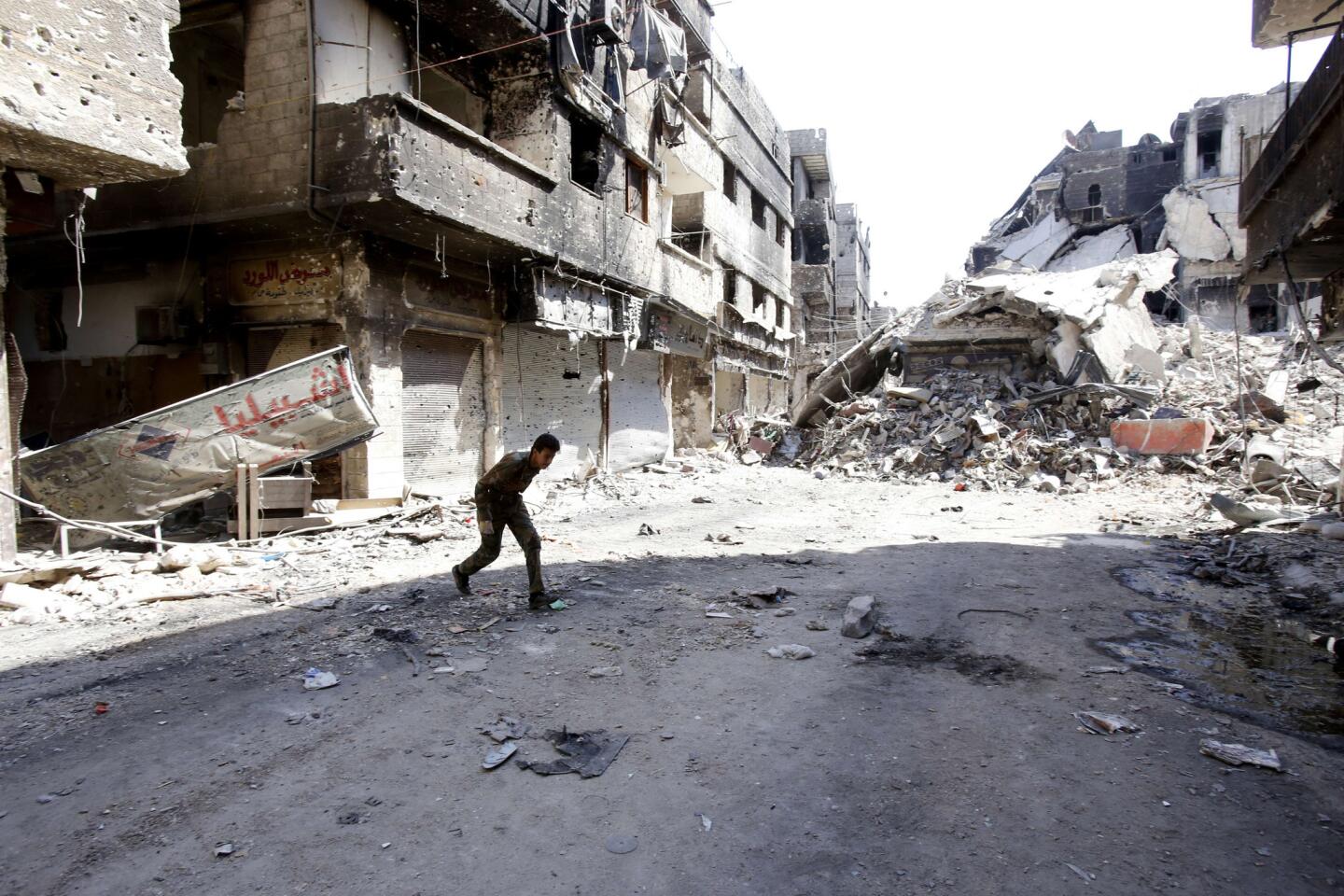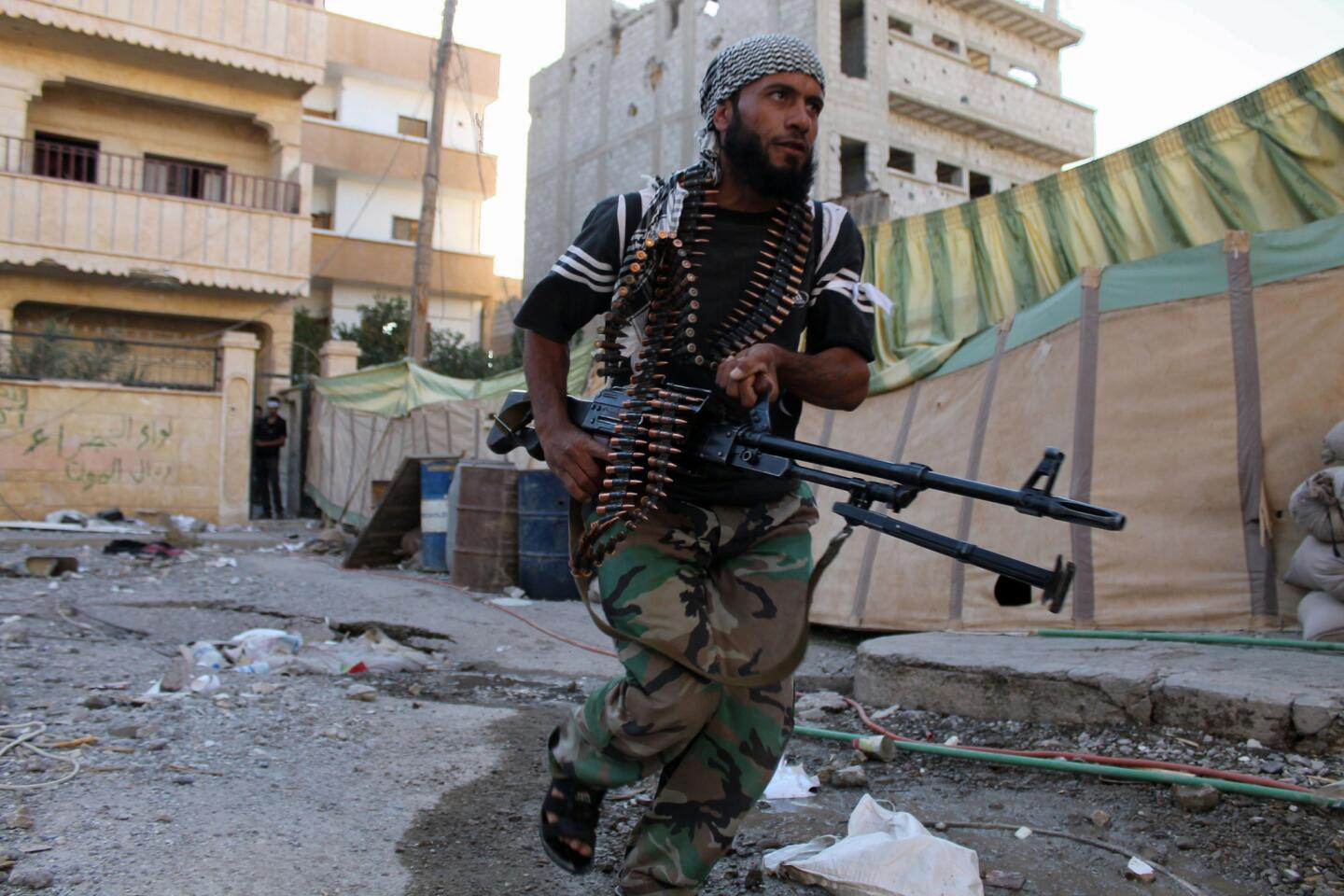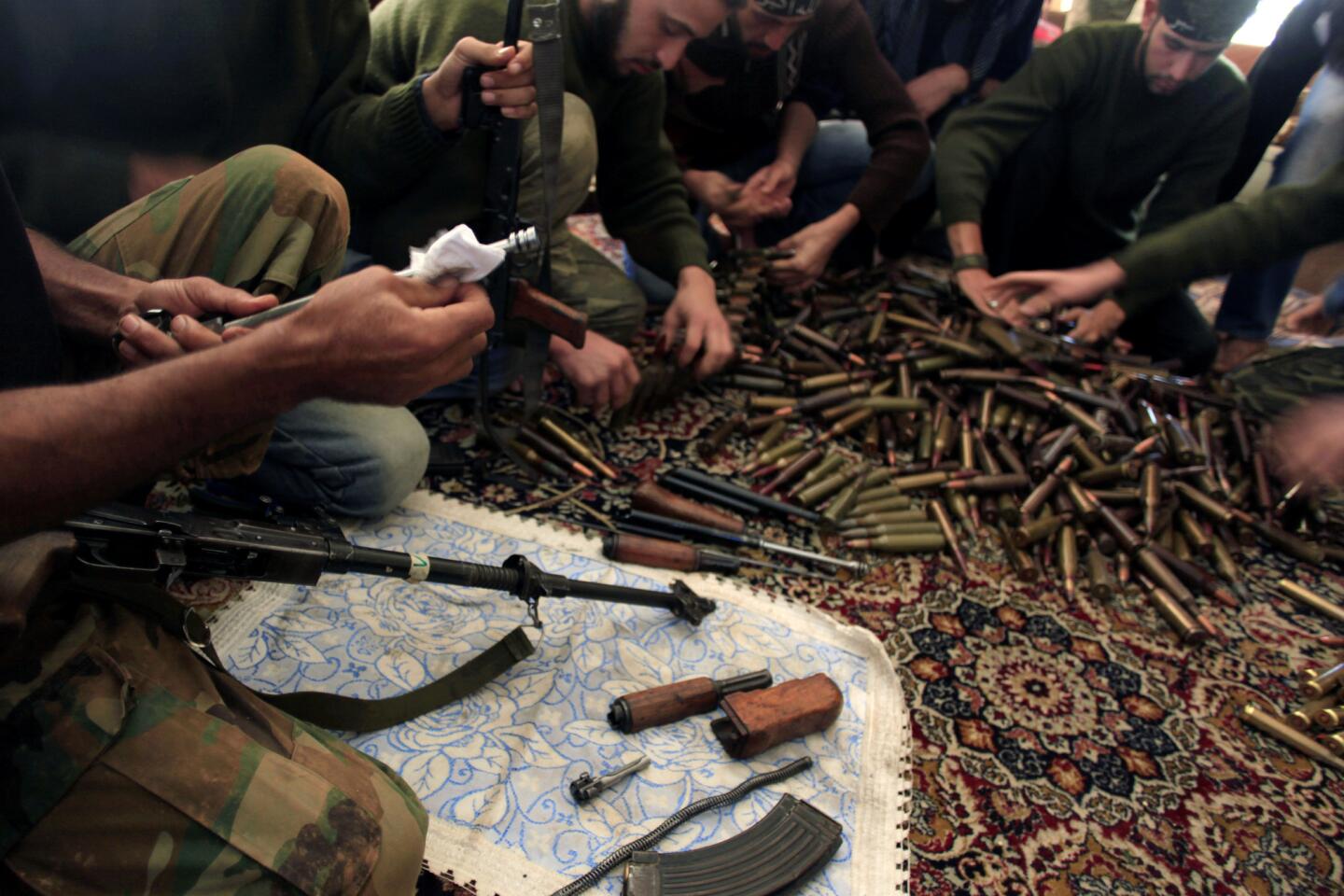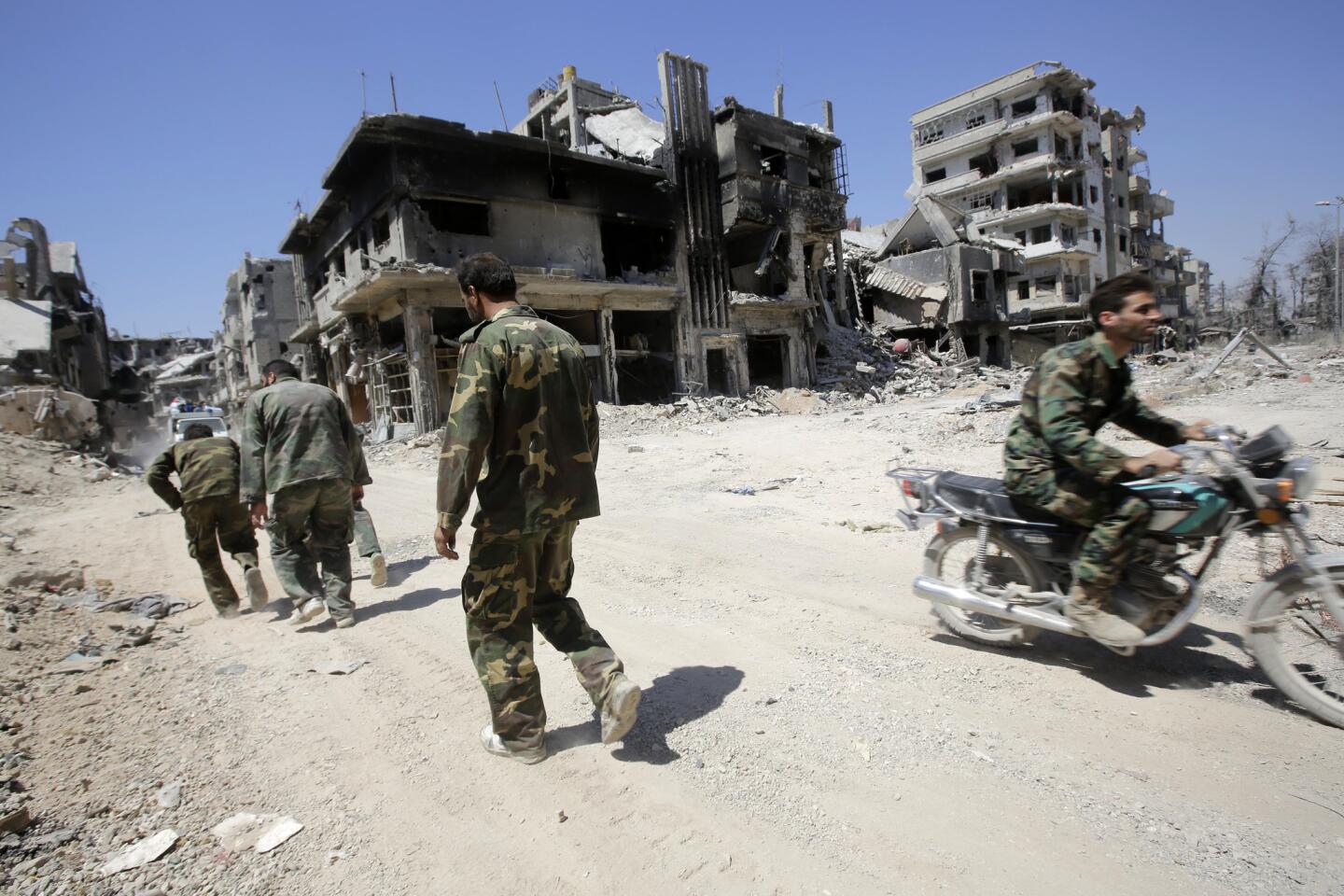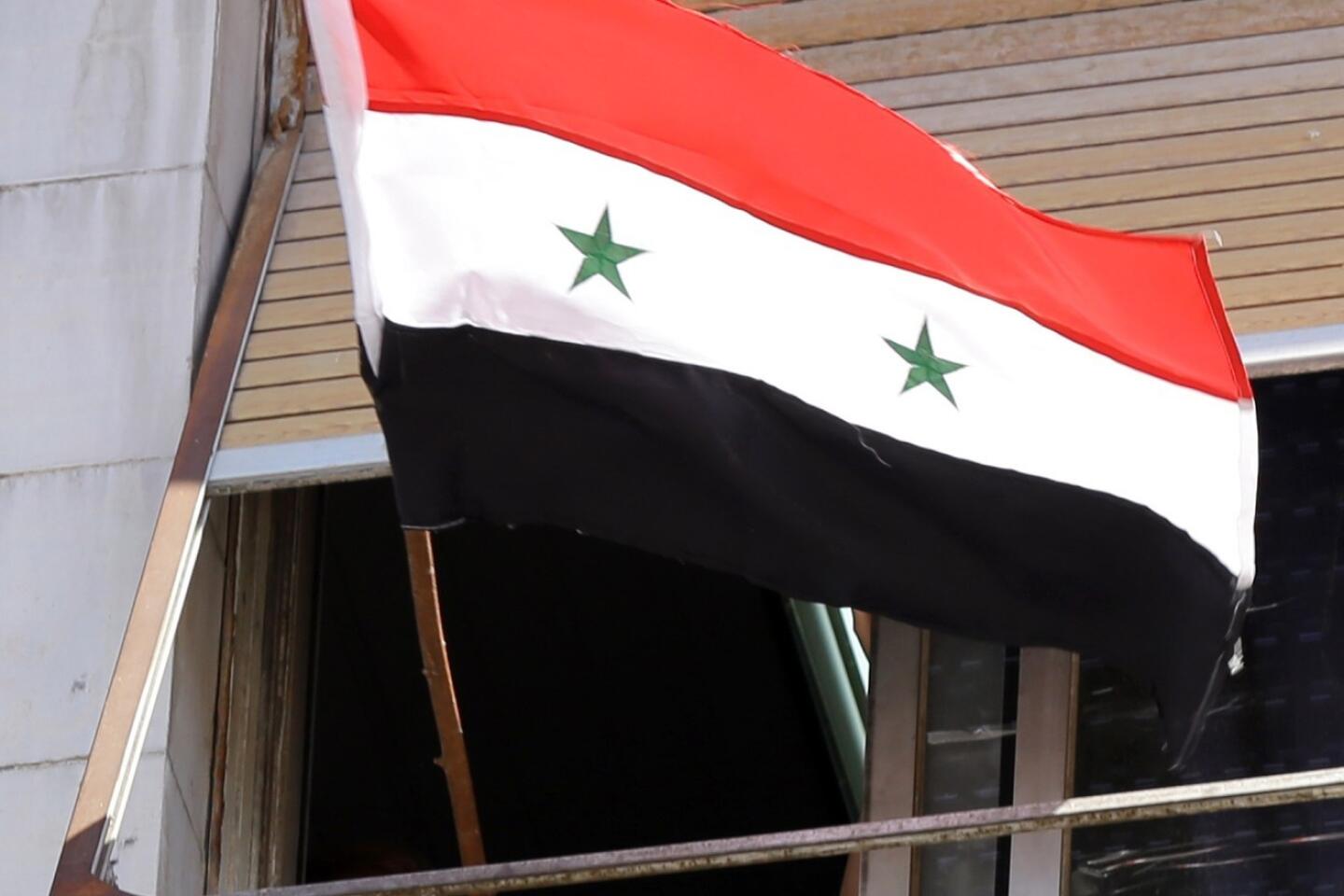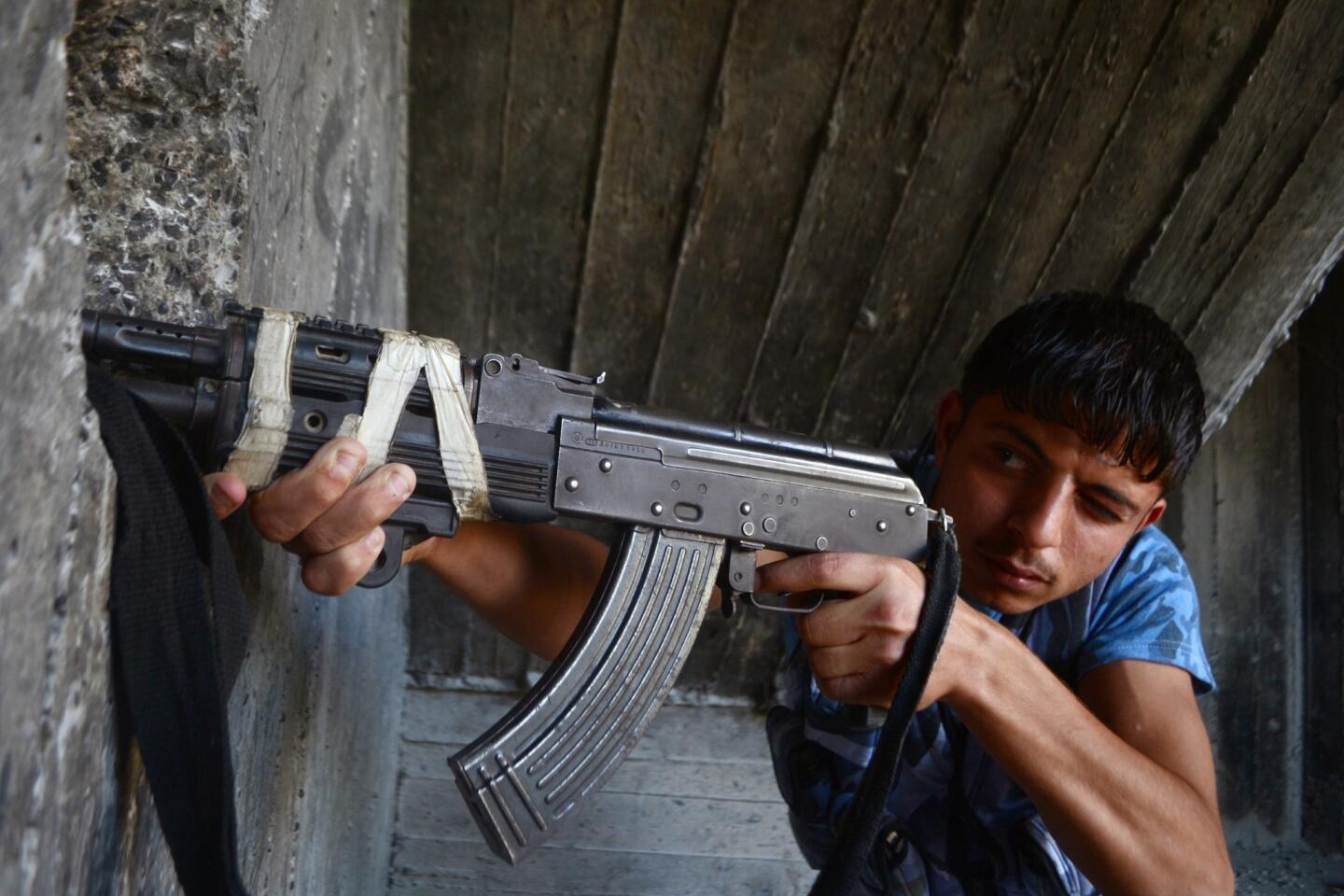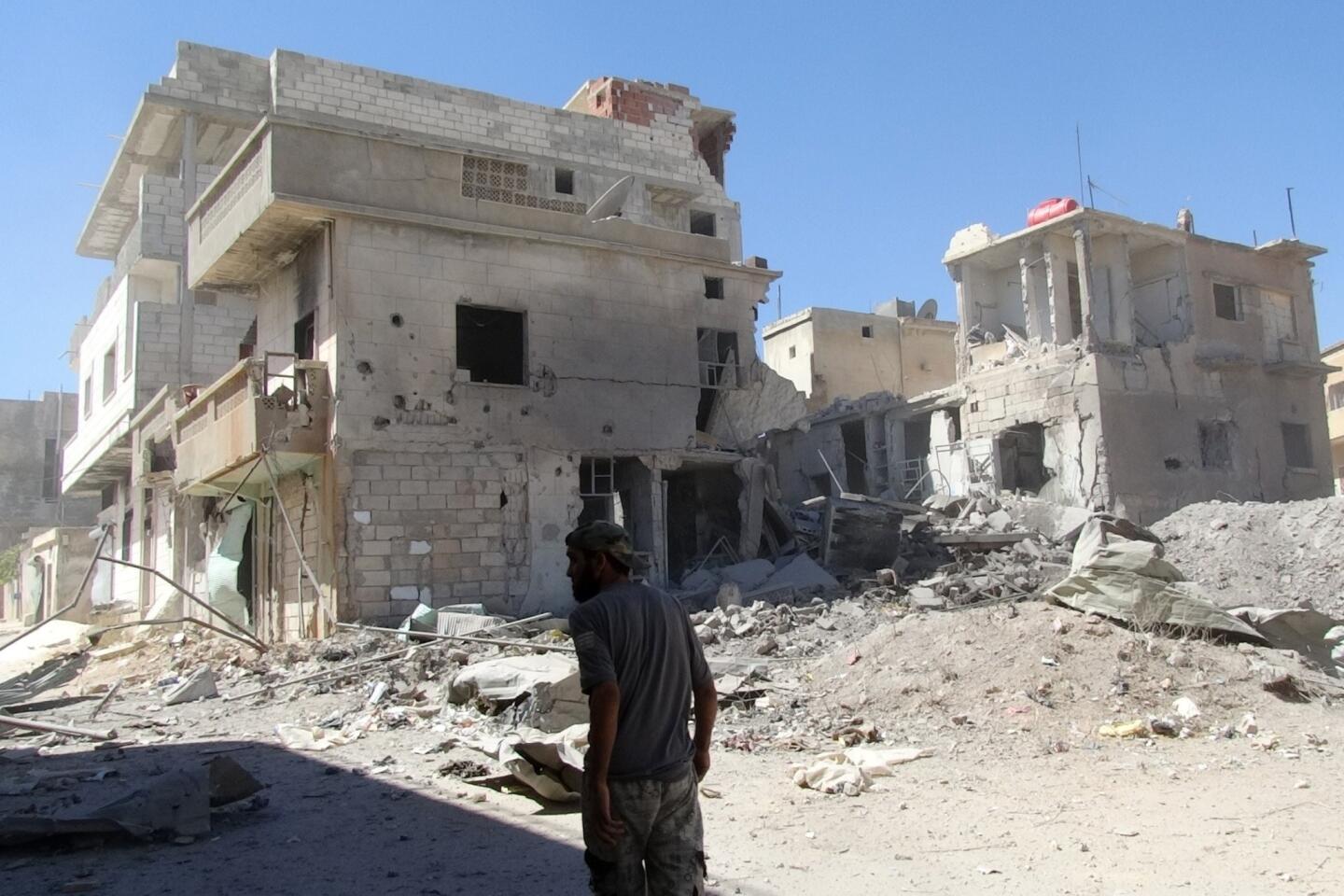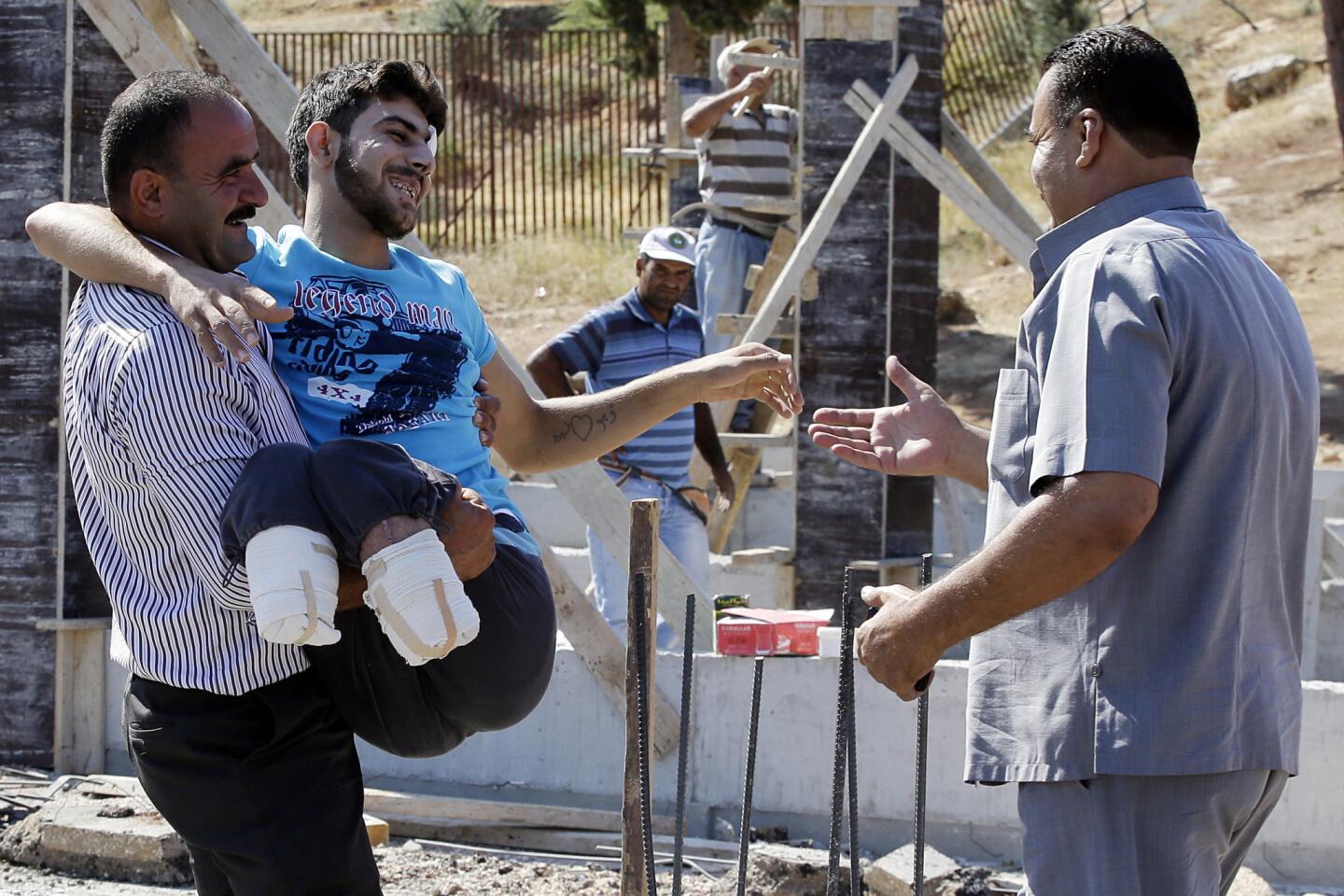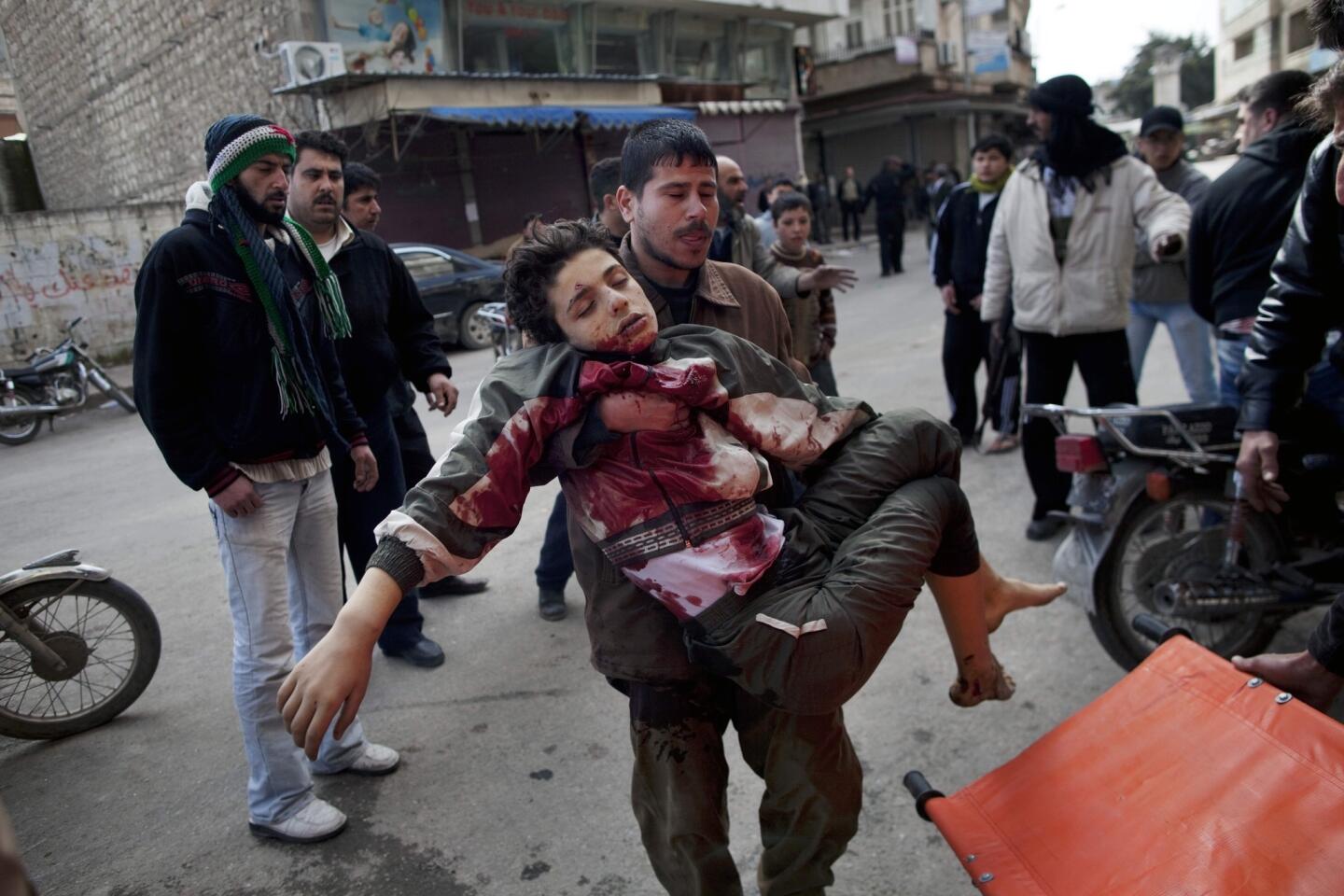Fragile accord raises hope for residents trapped in Syrian camp
- Share via
YARMOUK, Syria — They emerged from a dim alley called Rama Street, some carried on stretchers or pushed in wheelchairs, others dragging bulging suitcases as they looked for loved ones waiting beyond the clutch of gunmen and aid staffers.
“I’m so happy: I can finally feed my children properly,” said a gaunt but exhilarated 21-year-old named Ruba, clutching an infant son and a 3-year-old daughter as she strode down the muddy street to freedom Tuesday.
The Syrian woman and others had finally escaped the war-ravaged confines of the Yarmouk camp, where about 18,000 people remain trapped without food, running water, electricity or other necessities in what was once home to more than 200,000.
Yarmouk, in the southern reaches of Damascus, had long ago been the largest and most renowned Palestinian refugee enclave in Syria, but in recent decades transcended the camp label and became a dynamic neighborhood that housed striving Palestinian and Syrian families.
The almost 3-year-old Syrian civil war has laid waste to the neighborhood of mostly four- and five-story apartment buildings, as it has so many across the nation. Since June, the remaining civilians in Yarmouk have largely been unable to leave, and according to activists, have faced the prospect of death by hunger or related ailments. Pro-government forces have blocked aid from going in, concerned that it would go to opposition fighters there, while rebels have barred people from leaving.
But under a fragile accord worked out among anti- and pro-government factions in the camp, some residents have begun to exit the rubble-strewn neighborhood. Food, medicine, vaccines and other aid have begun to trickle in. Those departing are mostly women and children, the aged and the sick, the most vulnerable.
Thousands, however, remain stuck there, without sufficient supplies. And the assistance getting in is not nearly enough, according to the United Nations and aid agencies. But amid the humanitarian catastrophe that is Syria today, the advances in Yarmouk count as substantial progress and possibly a blueprint to aid about 250,000 civilians trapped in besieged communities across the nation.
“It’s a small step, but hopefully it can grow to help many more people,” said Razan Jaradeh, who was helping to coordinate the evacuations here for the Syrian Arab Red Crescent. “We are starting on a very limited level here.”
The sprawling Yarmouk district is largely surrounded by government troops and allied Palestinian militiamen. The core of Yarmouk is controlled by antigovernment rebels, many themselves Palestinians.
The government accuses the rebels of using the civilians as “human shields,” their presence a deterrent to all-out military bombardment. The opposition and its allies, including the United States, charge the government has engaged in a “surrender or starve” campaign, blocking aid deliveries and targeting anyone attempting to leave.
Interviews here suggest that there is some element of truth in both versions.
One woman who left Tuesday said armed rebels regarded anyone who sought to leave as a government collaborator. “If you want to get out, they accuse you of being with the regime,” said the woman, who, like others interviewed, did not want her name used in order to protect their safety.
But she also said that when she and others managed to reach a checkpoint a month ago, they were turned back by government troops. In addition, all the men in the group, including her husband, were arrested, she said.
The daily evacuations and aid deliveries in Yarmouk are meticulously planned and choreographed at a northeastern checkpoint known as Bateekhah, or watermelon, after a nearby concrete sculpture that resembles the fruit. Under the accord, Bateekhah is the only place where residents can leave and aid can enter.
Army troops and pro-government Palestinian forces man the checkpoint. The crackle of gunfire and the thud of mortar fire occasionally resound in the background. Opposition forces are about 400 yards inside, deep in the warren of apartment blocks pocked with bullet and shrapnel holes. Rival sniper positions mark the boundaries.
Once cleared, pickup trucks filled with U.N. aid packages proceed slowly up Rama Street, their goods to be distributed by hand farther inside the neighborhood.
Those seeking to leave must submit names in advance to Palestinian officials. Women, children and the elderly account for the great majority departing. Fighting-age men may be subject to arrest and interrogation; few if any appear to be among those exiting.
Each morning, the area outside the checkpoint brims with expectant relatives, all hopeful that their loved ones will be among those exiting. Many families were precipitously divided when the neighborhood was cut off in June, residents said.
“My grandson hasn’t seen his mother or his brother and sister in more than six months,” said one woman waiting at the checkpoint, holding the hand of a teary-eyed 6-year-old grandson, who was visiting last summer and stranded when the camp exits were shut.
Muna Abdel-Rahman, 50, who suffers from a heart condition, said her son slipped back into Yarmouk last summer to find her respirator, which had been left behind when the family fled the fighting. He hasn’t been able to come out, she said. Two of her grandchildren are also trapped, she said. Brief cellphone exchanges have left no doubt about how difficult conditions are.
“Mom, we’re starving,” Abdel-Rahman recalled her son saying in a recent call. “We don’t have enough to eat.”
Each day, Abdel-Rahman arrives at the checkpoint at 8 a.m. to see whether her loved ones are among those leaving.
“We just want them out,” she said, her eyes fixed on the narrow opening of Rama Street, where evacuees occasionally emerge, accompanied by Red Crescent volunteers. “We don’t want any aid. We don’t want to go back inside. We just want them back.”
On this day, her son and grandchildren didn’t materialize beneath the Syrian flags that are now strung above Rama Street, which is flanked by wall posters of President Bashar Assad. Once again, Abdel-Rahman went away disappointed. But she vowed to come back the next day.
Among those managing to leave was Sabha Hassan Mohammad, 87; originally from the city of Haifa, she is among the dwindling number of Yarmouk residents who were born in what is now Israel. She was carried out on a stretcher and placed in a Red Crescent minibus to be taken to a hospital. She said the lack of food bothered her more than the fighting.
“We have been trying to get her out for the longest time,” said her daughter-in-law, who held the elderly woman’s hand amid the commotion at the checkpoint.
Into the same minibus bounded an ecstatic Ruba, cradling her 10-month-old son, Omar, and holding the hand of daughter Malak, who had been suffering from severe diarrhea for six days, she said. All three were caked in mud. Ruba was extremely thin and pale, despite a bright smile flashing across her face. She had eaten so little of late that she could not breast-feed her infant, she said. So instead, she fed him water and sugar.
But that was now all in the past.
“We escaped the hunger,” she said as she sat in the minibus. “That’s all that matters now.”
Special correspondent Nabih Bulos contributed to this report.
More to Read
Sign up for Essential California
The most important California stories and recommendations in your inbox every morning.
You may occasionally receive promotional content from the Los Angeles Times.
